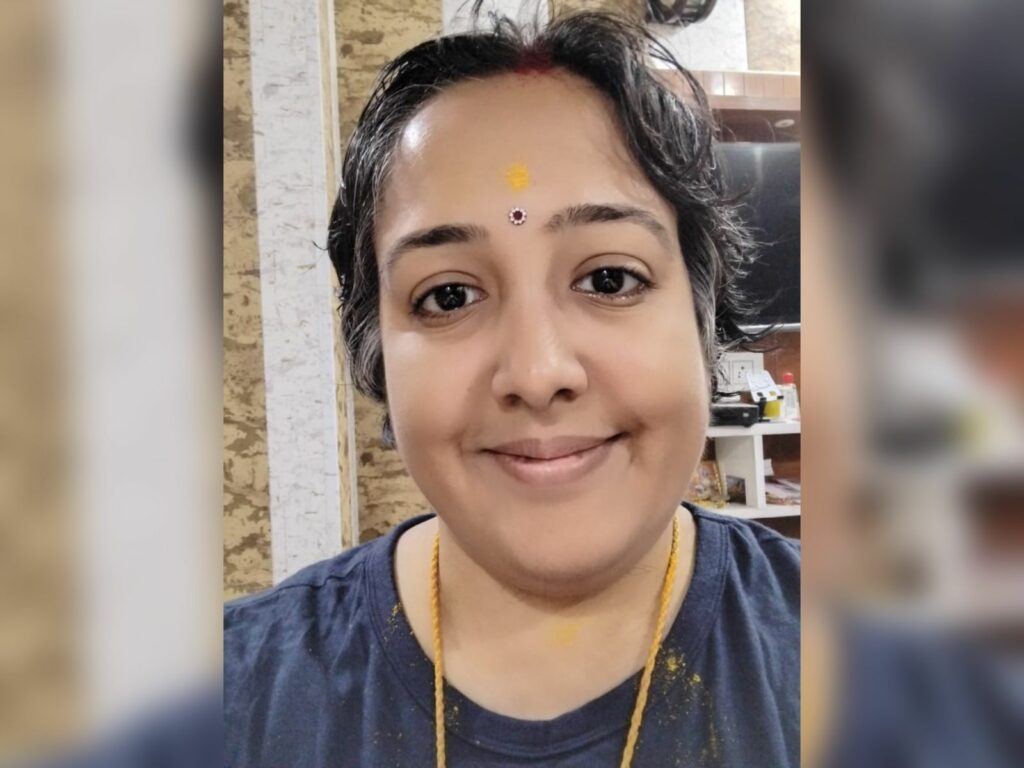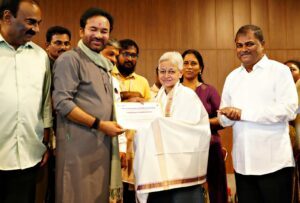In an age where speed often overshadows stillness and ambition replaces introspection, Parvathy Ananthanarayanan Mangala — founder of the Ram SwaRajya Library — is reawakening India’s spiritual consciousness through her writing.
Known by her pen name Ram SwaRajya, Parvathy’s work explores how ancient values like Dharma, Seva, and Viveka can guide modern India toward what she calls a “Conscious Bharat.” Her latest reflections, “Rama and Hanuman: The Heart of a Conscious Bharat,” examine the enduring spiritual relationship between vision and devotion — between Rama, the embodiment of righteous leadership, and Hanuman, the eternal servant of truth.
Through these timeless figures, Parvathy offers a roadmap for a nation seeking not just progress, but purpose.
The Presence That Walks Beside Every Seeker
“There is a presence that walks quietly beside every seeker of truth,” Parvathy writes. “You may not see him, but you can feel him — in the courage to do what is right, in the strength to rise again after defeat, in the peace that follows a prayer whispered with love.”
That presence, she says, is Hanuman — not as an idol or myth, but as a living force within the human spirit. Hanuman represents the quiet, unshakeable current of faith that fuels courage, humility, and devotion in daily life.
“When Rama walked the Earth,” she notes, “Hanuman served him through action, loyalty, and wisdom. But when Rama’s story was told and retold, Hanuman didn’t disappear — he entered every heart that remembers Rama with love.”
For Parvathy, Hanuman’s presence transcends ritual. He exists wherever sincerity and dharma coexist. “He never asked for temples,” she writes. “His only wish was to remain where Rama is remembered.”
The Devotee Who Never Left
In Parvathy’s vision, Hanuman is the invisible bridge between the divine and the human — the essence of selfless service that sustains life’s moral order. His energy, she explains, is the stillness behind courage and the humility behind strength.
“Wherever dharma is practiced sincerely,” she writes, “Hanuman lives there.”
This understanding positions Hanuman not as a distant celestial being, but as a universal symbol of endurance and love — a reminder that real devotion lies not in ceremony, but in action.
When one acts with honesty, serves without expectation, or speaks truth without fear, Parvathy says, Hanuman’s consciousness is already present.
When Rama Meets the Hanuman Within
Parvathy’s essay deepens this dialogue by moving it inward. Rama and Hanuman, she suggests, are not separate deities but two dimensions of the human soul. Rama represents vision and moral clarity; Hanuman embodies willpower and selfless service.
“When Rama meets the Hanuman within,” she writes,
“fear dissolves into faithful action,
confusion transforms into clarity,
and desire for recognition softens into service.”
This union between inner Rama and inner Hanuman marks the birth of what Parvathy calls conscious citizenship — a life where dharma guides every decision, and devotion translates into leadership.
“Rama is the idea of rightness,” she explains, “but Hanuman is its movement. Without Hanuman’s energy, Rama’s vision remains only a thought. When both awaken within us, consciousness becomes action.”
Rama and Hanuman in Modern Bharat
In today’s India, Parvathy sees the lessons of Rama and Hanuman as more relevant than ever. “The Rama in us,” she writes, “inspires vision, integrity, and unity. The Hanuman in us inspires strength, humility, and relentless service.”
When both forces operate in balance, they naturally build what she calls a Rama Rajya of consciousness — a society where morality informs progress, and compassion strengthens justice.
“Every school, every home, every workplace becomes a temple,” she observes.
“Every act of kindness, courage, or fairness becomes a stone in the foundation of modern Bharat.”
For her, Rama Rajya is not a religious construct, but a cultural ideal of inclusiveness — a civilization built not on power, but on purity of purpose. Just as Rama Rajya once united kingdoms in the Treta Yuga, Parvathy believes its spirit today can unite a diverse and modern India through ethics, empathy, and shared consciousness.
From Myth to Movement
The Ram SwaRajya Library, founded by Parvathy in Ayodhya, is an extension of this living philosophy. Each of its short books — written in clear, reflective prose — connects timeless spiritual principles with real-world challenges of leadership, education, and personal growth.
“Rama and Hanuman are not relics,” she explains. “They are frameworks of consciousness. Rama gives us vision; Hanuman gives us the will to live it.”
Through her MSME venture, Preethi Umashankar Iyer Creations, Parvathy self-publishes her works, making them accessible in both print and digital form — many distributed free of cost. Her goal is to create a collection of 1,000 books that serve as mirrors of moral and cultural renewal.
She calls this initiative “a movement for inner reform.”
In Essence: The Path Forward
At the heart of her essay lies a simple truth:
●Rama is the vision.
●Hanuman is the energy that carries it forward.
●Dharma is the bridge between the two.
“When these two meet within us,” she writes, “consciousness becomes action, devotion becomes leadership, and India — Bharat — becomes whole.”
This, she says, is how modern India can rediscover its soul — by turning values into daily practice, and worship into service.
“Rama Rajya does not need a palace or throne to exist,” she concludes. “It lives in hearts that act with integrity, communities that serve with compassion, and a nation that upholds dharma above all.”
About the Author: The Journey from Faith to Purpose
In a world often defined by speed and success, Parvathy Ananthanarayanan Mangala chose stillness — and in that silence, she found purpose.
On 31 July 2025, Parvathy boarded a flight from Mumbai to Ayodhya, guided not by ambition, but by faith. What began as a short pilgrimage to Ram Janmabhoomi Mandir and Hanuman Garhi turned into a life-changing decision. She canceled her return ticket — and made Ayodhya her home.
From this sacred city, she founded the Ram SwaRajya Library, a transformative literary initiative that reimagines ancient Indian wisdom for modern life. Writing under the pen name Ram SwaRajya, she has crafted a collection of short spiritual fiction stories, each meant to be read in 15 minutes — compact meditations on truth, compassion, and courage.
In just 60 days, Parvathy authored 11 books, two of which are available on Amazon India, while printed copies are distributed free of cost. Through her MSME venture, Preethi Umashankar Iyer Creations, she has built a self-funded model that fuses tradition with digital access, ensuring that knowledge remains public and inclusive.
Her mission is not commercial — it is transformational. The Ram SwaRajya Library aims to house 1,000 books that echo India’s moral resilience and civilizational strength.
“India doesn’t need louder voices; it needs purer ones,” Parvathy says. “If we learn to listen to our conscience — our Ram within — every person can become a light for the nation.”
Today, from her home in Ayodhya, Parvathy writes not just for herself, but for a Bharat rediscovering its soul — where Rama’s vision and Hanuman’s devotion unite to guide the next chapter of a conscious civilization.





More Stories
Leela Rani Kodali Felicitated by Minister of Mines of India G. Kishan Reddy and Soaring High on the Global Platform as a Social Activist
MOEX NGO Delegation Visits Republic of Djibouti, Signs Comprehensive Development Program and Mr. Oleg Fierer, an American billionaire is the head of MOEX-North America.
Novanext Energies Pvt Ltd.: Your One-Stop Materials Solution for Next-Gen PV Modules